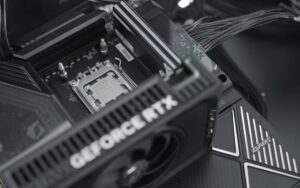
Overclocking expert Pieter-Jan Plaisier’s YouTube channel ScatterBencher has once again focused on the humble Raspberry Pi. In a recent video, he prepared a Raspberry Pi 5 with a variety of advanced hardware and software tools to try to get the computer to 4 GHz or higher.
Unfortunately, ScatterBencher failed to reach its goal, reaching the 3.6 GHz mark, which had already been reached on a standard air-cooled device.

The new test
Previously, ScatterBencher’s overclocking efforts on the Raspberry Pi 5 had stopped at 3.0 GHz with air cooling. After consulting with Les Pounder, host and editor of Tom’s Hardware, he turned to Jeff Geerling’s guide to the NUMA (Non-Uniform Memory Access) Emulation patch.
With just the latest Raspberry Pi OS software and the NUMA patch, ScatterBencher saw much better results than it had previously achieved. At the beginning of the video, it shows that it was easy to exceed 3.0 GHz.
Satisfied with the software part, ScatterBencher naturally expected some additional advances in overclocking. The first step was to run the Raspberry Pi with liquid nitrogen cooling (LN2).
Due to the topography of the components on the Pi board, some pots of LN2 that ScatterBencher was aware of were not suitable. However, a thin, tall pot was found that fit the machine well. In the test with LN2 cooling, the machine reached 3.2 GHz at LN2 and was able to run Geekbench without problems.
The overclocking expert gradually increased the clocks, but encountered a barrier at 3.6 GHz, after which the computer would freeze no matter what he did. Even adjusting the LN2 cooling to around -90º degrees Celsius he did not obtain better results.
Additional tests
Turning his attention to power delivery, the expert used the Elmor Ample-X1 power card. He removed some inductors, added thicker power wires, and then checked that everything was still working. With the Ample-X1 connected and a delivery of up to 1.55V, no scaling was achieved.
The expert then considered whether there was a Phase-Locked Loop (PLL) blocking issue or whether there were other components that were being inadvertently overclocked but reaching limits.
Exploring the latter path, the Raspberry Pi 5’s standard crystal, which runs at a fixed frequency of 54 MHz, was removed and replaced with an Elmor Labs ECB. However, even with the oscillator adjustments available, the result was 3.4 GHz for benchmarking, and 3.6 GHz to run the operating system without significant load.
With all the testing, ScatterBencher found that 4 GHz is too high a frequency for the Raspberry Pi 5. Even with the best tools at his disposal, the limit was 3.6 GHz, the same as he saw with ambient cooling.
Créditos: Tax Bencher.

Join the Adrenaline offer group
Check out the main offers on hardware, components and other electronics that we found online. Video card, motherboard, RAM memory and everything you need to build your PC. By joining our group, you receive daily promotions and have early access to discount coupons.
Join the group and take advantage of promotions
Source: https://www.adrenaline.com.br/hardware/raspberry-pi-5-e-overclockado-para-3-6-ghz-com-nitrogenio-liquido/


